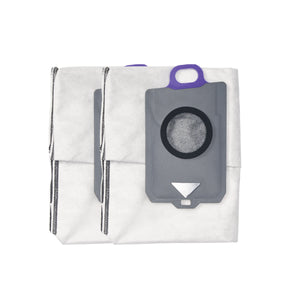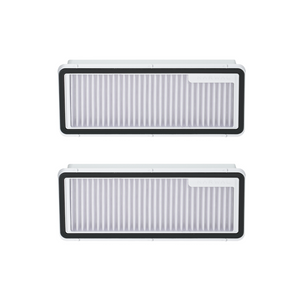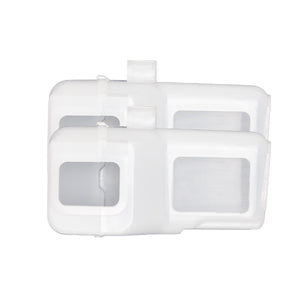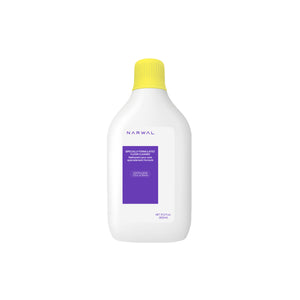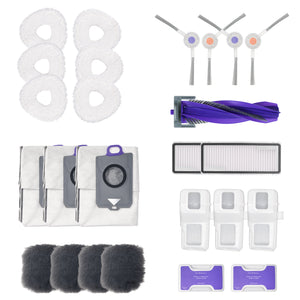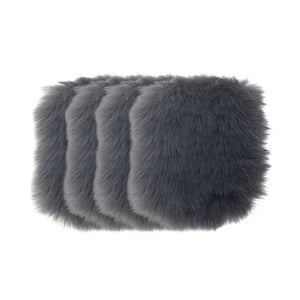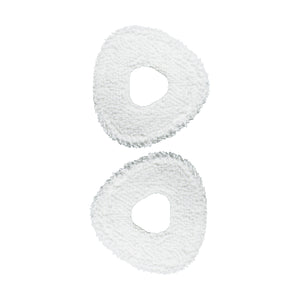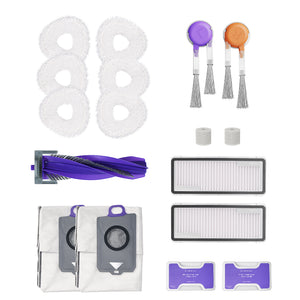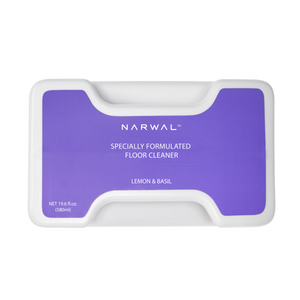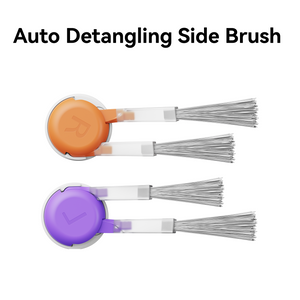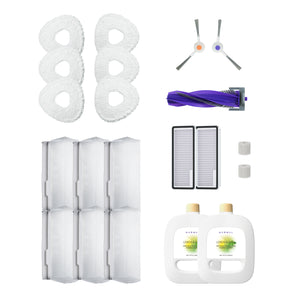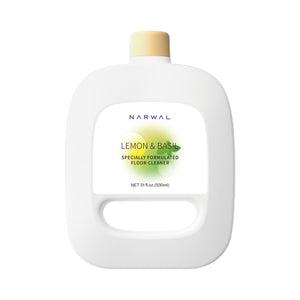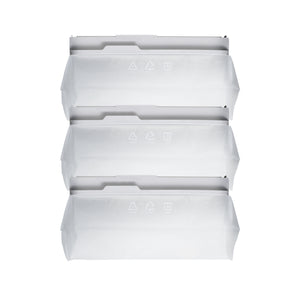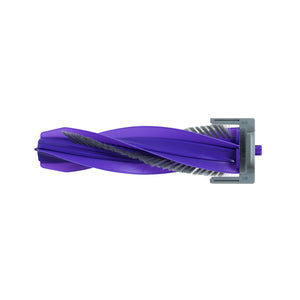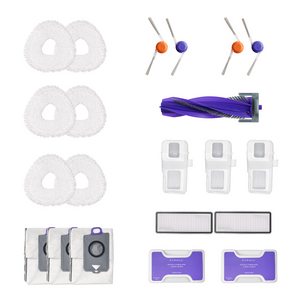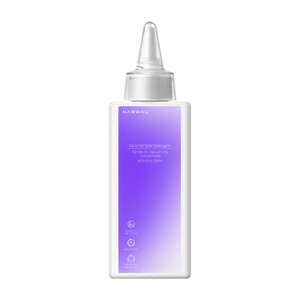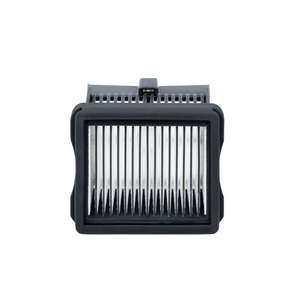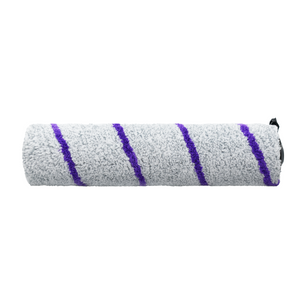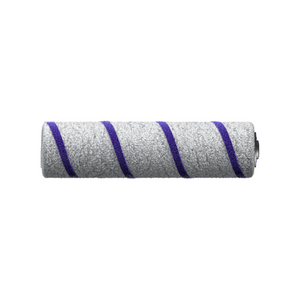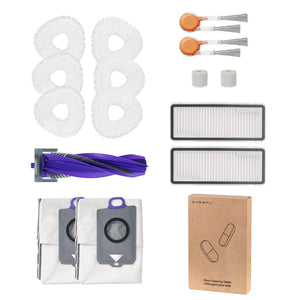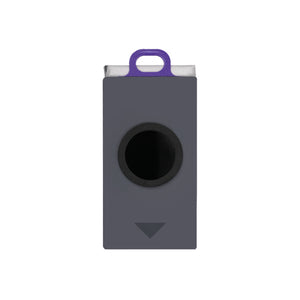Not every home needs a smart vacuum. This guide is for those who want a simpler, app-free solution. Not all robot vacuums need WiFi, but the difference it makes is bigger than most people expect.
This guide shows what a robot vacuum can doesn’t need WiFi, from starting manually to basic navigation and cleaning. Then we look at what WiFi adds, including scheduled cleaning, mapping, and voice control. At the end, we help you decide which type fits your space, habits, and expectations best.
Can a Robot Vacuum Work Without WiFi?
Yes. Most robot vacuums can still clean your floors even if there's no WiFi available. Many users often ask whether a robot vacuum needs WiFi to function. In fact, a robot vacuum without WiFi can still handle everyday cleaning through its onboard buttons or a remote. While features like scheduling, mapping, and app control do require WiFi, the essential vacuuming functions remain available offline.
Most robot vacuums—including the majority of Narwal models—typically connect over 2.4 GHz Wi-Fi. If you're unsure whether your device supports 5 GHz, this guide on Wi-Fi compatibility can help.
What Can a Robot Vacuum Do Without WiFi?

Without WiFi, a robot vacuum can still handle everyday tasks like starting and stopping manually, spot or edge cleaning, and navigating with onboard sensors. Some models won’t build maps, but they still clean effectively in real time. Many users ask “do robot vacuums work without WiFi?”—the answer is yes. A robot vacuum without WiFi is a good choice if you want simplicity or prefer not to rely on internet connectivity.
Start and Stop Cleaning Manually
Without WiFi, you can start and stop a robot vacuum directly using the physical buttons on the device. Most vacuums have a “Clean” or “Power” button that starts a standard cleaning cycle with one press. To stop or pause it, press the same button again.
Some vacuums have extra buttons for changing suction or switching modes. These features depend on the model. If your vacuum includes a remote control, it usually gives you more options, like stopping, pausing, or starting spot cleaning.
When you start the vacuum manually, it will follow its default cleaning path. You don’t need to download an app or set up an account, which makes manual use simple and quick. However, you won’t be able to adjust settings, check progress, or schedule future cleanings unless those features are built into the robot itself.
Perform Spot or Edge Cleaning
Many robot vacuums include manual modes for spot or edge cleaning, even without WiFi. Spot cleaning focuses on a small area by spiraling outward from a starting point, which is useful for crumbs or dirt in one location. Edge cleaning follows along walls and corners to target buildup along baseboards.
These modes are usually activated by pressing a dedicated button on the robot or using the included remote control. If the robot does not have physical buttons for these modes, they may not be available without app access.
Navigate Using Onboard Sensors
Robot vacuums rely on onboard sensors to navigate without WiFi. Basic models use simple infrared and bump sensors to move in random or semi-random patterns, often bouncing off furniture and walls as they clean. Advanced models follow more structured paths using a combination of gyroscopes, radar, and infrared sensors.
Narwal vacuums, for example, are equipped with advanced navigation systems that include radar sensors and infrared detectors. Some models also integrate cameras and AI chips to create smarter, more efficient cleaning routes. The Narwal Flow, for instance, combines dual RGB cameras with AI to recognize over 200 objects in real time, helping it avoid cluttered environments without needing cloud processing.
Even without an internet connection, these sensors help the vacuum avoid stairs, slow down near obstacles, and reduce the chances of getting stuck. However, without access to mapping or app support, the robot cannot remember your home layout and will treat each cleaning session as if it is navigating the space for the first time.
Return to Charging Dock Automatically
Most robot vacuums can return to their charging dock on their own, even without WiFi. When the battery runs low or a cleaning cycle ends, the robot uses infrared or radio signals to locate the dock and guide itself back.
This process is automatic and does not rely on an app or internet connection. As long as the dock is plugged in and placed in an open, accessible area, the robot can find it and recharge.
However, if the robot gets stuck or lost before finishing, it may not return properly. Without WiFi or an app, you will not get alerts or be able to track its location, so it is important to check occasionally that it has returned as expected.
Use Self-Cleaning and Auto-Empty Functions
Robot vacuums with a base station can often perform self-maintenance tasks without needing WiFi. If the vacuum supports auto-emptying, it can transfer debris from its internal dustbin to the base station automatically after cleaning. This process is controlled by hardware, not the app.
For models that include mopping, the base station may also rinse the mop pads or refill the water tank on its own. Narwal vacuums, for example, support automatic mop cleaning and drying between runs. The Narwal Flow enhances this with a FlowWash system that uses warm water and firm pressure to keep the mop track clean during every pass, reducing the chance of dirt spreading.
[cta:flow-robot-vacuum-and-mop]
These features continue to work even when the vacuum is offline. However, without the app, you will not receive notifications if the dustbin is full or the water tank needs attention, so regular manual checks are important.
How Do Robot Vacuums Work Without Mapping?
Robot vacuums without mapping clean by reacting to their surroundings in real time. They use basic sensors to detect obstacles, walls, and drop-offs, changing direction whenever they encounter something in their path. There is no memory of room layout or previous runs, which is different from models with mapping that build and follow a stored floor plan.
Instead of following a planned route, the robot relies on built-in patterns like spiraling, zigzagging, or random movement to cover the space. This method can lead to uneven coverage, especially in larger or more complex rooms, but it is often effective for smaller areas or quick cleanups.
What a Robot Vacuum Can Do Without WiFi
|
Feature |
Available Without WiFi |
Details |
|
Start/Stop Cleaning |
Yes |
Controlled by physical buttons or remote |
|
Spot or Edge Cleaning |
Yes |
If supported by the model, activated manually |
|
Navigation |
Yes |
Uses onboard sensors; no saved maps |
|
Auto Return to Dock |
Yes |
Uses infrared or radio signals |
|
Auto-Empty or Self-Cleaning |
Yes |
Works if hardware-enabled, no app needed |
|
Schedule Cleaning |
No |
Requires app or WiFi-based scheduling |
|
Room Mapping |
No |
Mapping relies on app and cloud connection |
|
No-Go Zones |
No |
Configurable only via app with mapping |
|
Voice Assistant Integration |
No |
Needs WiFi and pairing with Alexa or Google Assistant |
|
Software/Firmware Updates |
No |
Delivered over WiFi through app |
What Can a Robot Vacuum Do With WiFi?

A robot vacuum can perform more advanced cleaning tasks and offer greater control when connected to WiFi. With app support, you can schedule cleanings, adjust modes, create maps, and set no-go zones. WiFi also enables voice assistant integration, automatic software updates, and cleaning history reports.
Many users wonder “do all robot vacuums require WiFi or an app to function?” The answer is no—basic models still clean without WiFi, but a WiFi-enabled robot vacuum unlocks these extra features for more convenience.
Schedule Cleanings via App
With WiFi, you can use the app to schedule cleaning sessions at specific times and days. This allows the robot to clean automatically while you are away or asleep, without needing to press any buttons.
You can set one-time cleanings or recurring schedules based on your routine. Some apps also let you create different schedules for different rooms or floor levels if the robot supports room recognition.
Customize Cleaning Modes and Maps
App control lets you adjust cleaning modes based on your needs. You can switch between vacuuming, mopping, or combined modes, and control suction power or water flow.
If the robot supports mapping, the app displays a live map of your home. You can label rooms, adjust the cleaning order, and select specific zones for focused cleaning. These settings can usually be saved and reused, making the robot more efficient with each run.
Set No-Go Zones
With WiFi and app support, you can draw no-go zones directly on the map to keep the robot out of certain areas. This is useful for avoiding pet bowls, cluttered corners, or fragile objects on the floor.
Some robots also support no-mop zones, which prevent mopping in carpeted areas. These virtual boundaries are easy to adjust and do not require physical barriers or magnetic strips.
Control with Voice Assistants
When connected to WiFi, many robot vacuums can be paired with voice assistants like Alexa or Google Assistant. This allows you to start, pause, or stop a cleaning session with simple voice commands.
You can also send the robot back to the dock or ask for its current status. Voice control is helpful for hands-free operation, especially when your hands are full or you are in another room.
Receive Software and Firmware Updates
WiFi connection allows the robot vacuum to receive software and firmware updates directly from the manufacturer. These updates can improve navigation, fix bugs, and sometimes add new features.
The process is automatic and typically runs in the background through the app. Keeping your robot updated ensures it performs at its best and stays compatible with new functions over time.
Monitor Cleaning History and Reports
Most apps track and store the cleaning history, giving you a clear view of when, where, and how often the robot has cleaned. You can review coverage maps, session durations, and battery usage.
Some apps also provide alerts if a cleaning session is interrupted or incomplete. This helps you spot missed areas, check performance over time, and manage maintenance more easily.
Brand Comparison and App Requirements
Some readers also wonder whether all robot vacuums require an app to function or if there are models that work with Bluetooth instead of WiFi. The answer depends on the brand and model:
-
Mova, Roomba, SharkNinja and other popular brands usually separate basic offline features (manual start/stop, auto-docking) from app-based functions like mapping, scheduling, or setting no-go zones.
-
A few entry-level models may offer an “offline mode” or limited Bluetooth compatibility, though these are less common.
-
If you prefer a simpler setup, check product descriptions and reviews for phrases like “robot vacuum without WiFi” or “no app required”.
For homes with unreliable internet or users who value privacy, searching for the best robot vacuum without WiFi can help you find models designed for straightforward, offline cleaning.
If You Want a Robot Vacuum Without WiFi
If you want a robot vacuum without WiFi, it means giving up smart navigation, software updates, and custom controls—these models run on fixed logic and cannot adapt over time. Still, they can handle the basics, such as manual start/stop, switching modes with physical buttons, and returning to the dock automatically. Many people search for terms like “robot vacuum without WiFi” or “non WiFi robot vacuum” when looking for these simplified options.
Choose a vacuum with physical buttons or a remote, and check that it doesn’t require WiFi for setup. Avoid models that only function through an app, even if they advertise offline cleaning.
This option may suit users with very basic needs, small open layouts, or strong concerns about privacy. For anything beyond that, a connected model usually offers better value over time.

Do All Robot Vacuums Need WiFi Just to Start Cleaning?
Not necessarily. Many robot vacuums can begin a standard cleaning cycle without connecting to WiFi. These models often rely on built-in buttons or a remote to operate. That said, it’s important to check whether the vacuum requires initial setup through an app—even if it claims to work offline.
Are There Robot Vacuums Designed Specifically for Offline Use?
Yes. Some vacuums are built for simplicity and operate entirely without an app or internet. These models typically offer just the essentials—like manual cleaning and auto docking—and are ideal for smaller homes or users who prefer a plug-and-play experience without extra tech.
Know What You Trade When Choosing a Robot Vacuum Without WiFi
Choosing a WiFi-free robot vacuum means accepting a simpler tool with limited flexibility. What you gain is ease of use and a lower price. What you give up is control, customization, and long-term efficiency.
If you want more than just basic cleaning, a WiFi-connected vacuum is the better choice. It lets you manage routines, define spaces, and get better results with less effort. This is where a smarter investment makes a difference. Models such as the Narwal Flow also show how advanced features like CarpetFocus technology or dual tangle-free systems can reduce the everyday issues that cause many robot vacuums to get stuck.
Narwal robot vacuums are built for users who expect more. With real-time mapping, self-cleaning systems, and app-based controls, they are designed to clean your home the way you would, or only better.
Still deciding if WiFi is worth it? With Narwal, you don’t have to compromise. Enjoy intelligent cleaning even without an internet connection — and upgrade to smart features whenever you're ready.





















